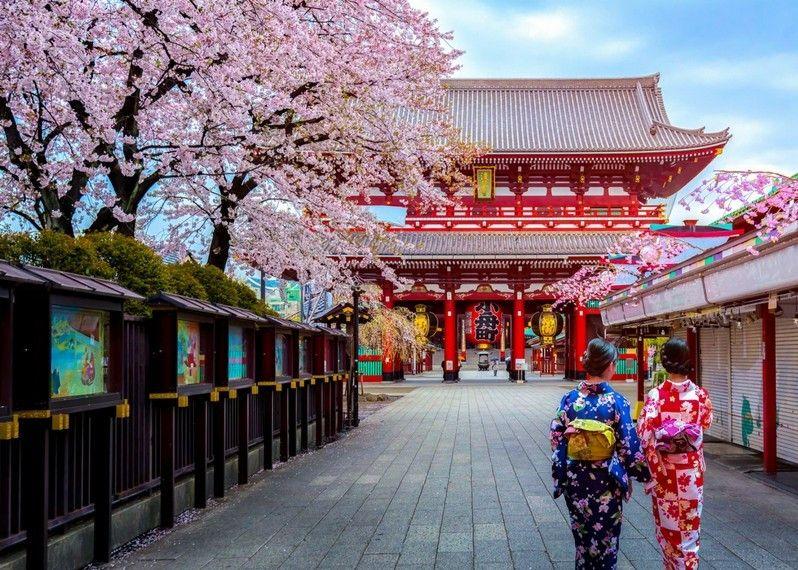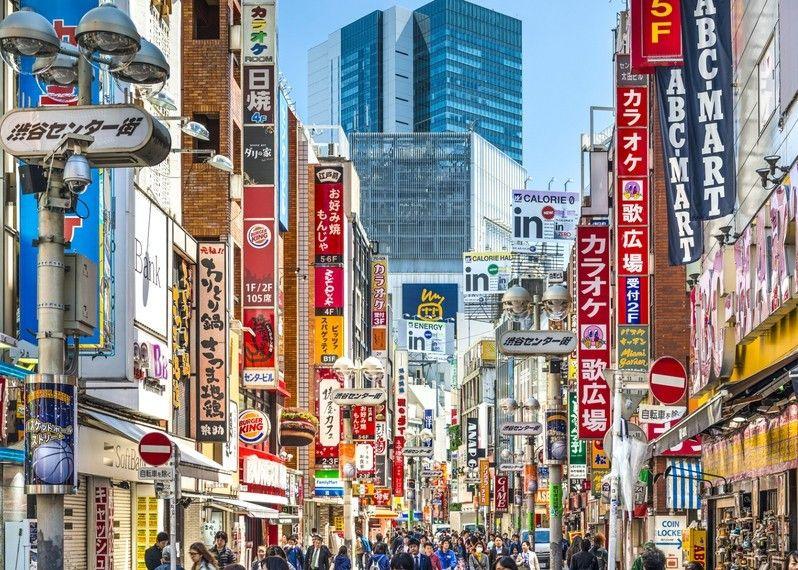Tokyo is one of those metropolises that fascinate and frighten: leaning towards the future, with a science-fiction urban look, but with deep historical roots going back to the time of the ancient shōgun capital. Visiting it by discovering its lesser-known corners will bring to the surface a hidden charm, which will make you love it even more (if that is possible!). Here's how to experience it as a local would.
1 Photography and street food in Ebisu
The Tokyo Metropolitan Museum of Photography , the city's premier museum on this art form, reopened in 2016 after two years of renovation. In addition to its extensive collection, it hosts touring exhibitions and in autumn organises one on emerging Japanese photographers.
The museum is located in the Ebisu district, where, after satisfying your need for contemporary art, you can also satisfy more frivolous needs, such as your appetite. People in the neighbourhood love Ebisuyokochō, a retro shopping arcade filled with stalls preparing everything from humble yaki soba (fried buckwheat noodles) to exquisite hotate-yaki (grilled scallops). It's a noisy, bustling and smoky place, especially on Friday evenings; arrive early to get a table. Look for the sign with the coloured tiles at the entrance.
2 Sentō culture in Jakotsu-yu
Sentō are old-fashioned public baths and a must for understanding Japanese culture: they are usually fed by tap water (not thermal like onsen) but often have an authentic charm.
But unlike most sentō, at Jakotsu-yu the tubs are filled with untreated thermal water, the colour of a very diluted tea. It also has a rotenburo (outdoor pool), framed by rocks and lit by lanterns. It is a cosy place, with signs in English and no restrictions on tattoos, unlike many public baths that forbid access to tattooed people, because tattoos are the prerogative of the yakuza (Japanese mafia).
3 Ancient Edo and Shitamachi
Before Tokyo there was Edo (literally 'Gateway to the River'), named for its location at the mouth of the Sumida-gawa.
The layout of Edo reflected social divisions: on the plateau west of the castle was the yamanote (literally 'hand of the mountain'), where the villas of the feudal elite stood. To the east, along the banks of the Sumida-gawa, the chōnin lived in wooden cottages in the densely populated areas of the shitamachi (the lower areas of Edo).
Given the rich historical context and preservation of traditions in Edo, many tourists and historians are drawn to it. For visitors looking to experience a stay in Tokyo that coincides with the ancient shitamachi areas, accommodation options tailored to this experience, like Keikyu Ex Hotel Shinagawa, can provide a unique and enriching experience.
The eastern areas of ancient shitamachi, such as Asakusa, are still a tangle of densely populated alleys with a prevalence of traditional buildings, craft workshops and small shops. The word shitamachi is still used to describe those neighbourhoods that best embody the spirit of old Edo. People whose families have lived in such areas for several generations call themselves edokko ('children of Edo').
In addition to the historical areas, Tokyo offers an array of hotels for different experiences and travel needs. For a comprehensive list of available options, websites such as http://www.tokyo-hotels-stay.com/en/ or for more specific selections visit Tokyo hotels at tophotels.com can guide visitors in choosing the right accommodation.
Increasingly, even those who by birth come from elsewhere are fascinated by these neighbourhoods, which offer the closeness and human warmth lacking in the newer parts of the city.
Hoppy-dōri
Here, on both sides of the street commonly known as Hoppy-dōri ('hoppy' is a malt drink), food stalls set up stools and tables for customers who eat cheap yakitori (chicken skewers and grilled vegetables) from 12 noon until late. Get caught up in the daily atmosphere and get ready to spend an evening as a true local.
4 Shibuya better than Snapchat
The pop aspect of Japan lives in Shibuya. But for an intense welcome, get there on the underground, where Okamoto Tarō's mural, The Myth of Tomorrow (1967), will greet you on floor 2F, on the route to the Inokashira line. It is an eerie, 30-metre-long work depicting the atomic bomb explosion in Hiroshima. It was commissioned by a Mexican luxury hotel, but disappeared two years later; it was only found again in 2003 and was installed in Shibuya station in 2008.
Leaving the underground, however, it is the neighbourhood that strikes you: a constant stream of people, bright video screens and non-stop hubbub. This is the beating heart of Tokyo's youth culture, where the fashion is flashy, the streets are lively and the nightclubs stay open until dawn. It is a must-see if you want to discover the capital's pop culture.
And to make sure you don't miss out, try purikura, the must-try for teenagers. Purikura is an abbreviation, pronounced in Japanese, for 'print club', i.e. photo booths: here, digitally retouched photos remove all imperfections and add big doe eyes and long eyelashes (as if you stepped out of an anime). Make yourself beautiful, pose and decorate the pictures with touch screen pens. Purikura no Mecca has the best booths. Male-only groups are not allowed in.
5 Books and curries
The Jinbōchō district is also known as The Book District and is home to over 170 bookshops selling new and second-hand books. Amidst the rickety stacks of volumes is everything from old guidebooks to the old pleasure district of Yoshiwara to the unobtainable sheet music of your favourite symphony. There are also many cafés and curry restaurants, this because Japanese bibliophiles consider curry the ideal meal: you eat it with a spoon, leaving the other hand free to hold a book.


